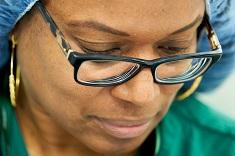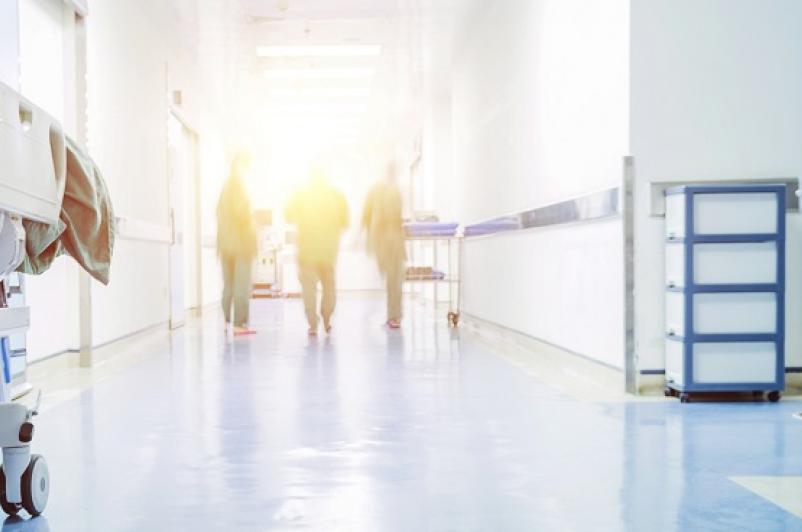
BINGHAMTON, NY (WSKG) — While COVID-19 hospitalizations rise around the country, hospitals are facing staff shortages. To meet the need, hospital leaders in the Southern Tier say they must hire reinforcements who will bolster an already exhausted workforce.
Throughout the pandemic, healthcare workers around the country have taken on longer, demanding hours to care for patients.
As of Monday, there were 45 hospitalizations related to COVID-19 in Broome County. County and hospital officials have also said they now see patients from more rural, neighboring counties that lack sufficient hospital infrastructure.
Providers at UHS care for patients from seven counties across the Southern Tier and Central New York.
Kay Boland, Chief Nursing Officer and Chief Operating Officer for UHS*, said the hospital system has enough beds in their COVID-19 units to meet current need. In preparation for another surge of cases, they have added 15 more negative pressure rooms for COVID-19 patients and more staff.
Nearly a quarter of all hospitals in the United States are nearing their intensive care unit’s maximum capacity. Many ICUs are overwhelmed with COVID-19 cases and risk running out of patient beds.
Space and equipment, however, can be reorganized and purchased. Boland said staff shortages and burnout are more pressing obstacles.
According to Boland, UHS has hired over 50 new agency nurses since August to work in its Binghamton-area hospitals for a limited time. The visiting nurses come from communities around the country, Boland said.
“The reason we’re doing okay in this area is only because we have supplemental staff here,” she said.
The additional nurses are necessary in both caring for COVID-19 patients and filling in for staff who are sick.
Boland said adding supplemental staff was the only way to balance the workload, especially as the second wave of COVID-19 cases in New York begins.
As community spread of the virus continues in the Southern Tier, Rajesh Davé, Clinical Integration and Chief Medical Officer for UHS, said some staff members have contracted the virus at small gatherings.
Davé said staff members have enough protective gear while caring for COVID-19 patients. They say staff exposure is more likely at small gatherings without social distancing.
“Staff that work in COVID-specific units are well provided for perfect protective personal equipment, so that’s not where they’re catching COVID,” Davé said.
According to Boland, many more staff members have fallen ill in recent weeks than in the spring, when the first wave of COVID-19 hit.
People everywhere gathered more frequently in the summer and fall as pandemic fatigue set in. Medical personnel are no different, Davé said.
He said his staff knows better than to meet in large groups at potential “mega-spreader” events, but they may have gathered at bars or restaurants where the virus may linger.
Boland and Davé agree, in the coming months, cases from nursing homes will largely determine the strain hospital systems will undergo.
“Long-term care facilities can treat-in-place many COVID patients but once they become critically ill or have very significant respiratory issues they really do need to move to a hospital,” Boland said.
Boland said a quick spreading virus in nursing homes can tip the scale. Older patients risk more complications from the virus and require intensive care that some nursing homes cannot provide.
“That variable can tip the healthcare systems into a very difficult situation if they were not able to treat enough patients in place,” Boland said.
The more people gather without masks, Boland said, the more cases and hospitalizations will continue to rise.
*Full disclosure, UHS is a WSKG underwriter.


